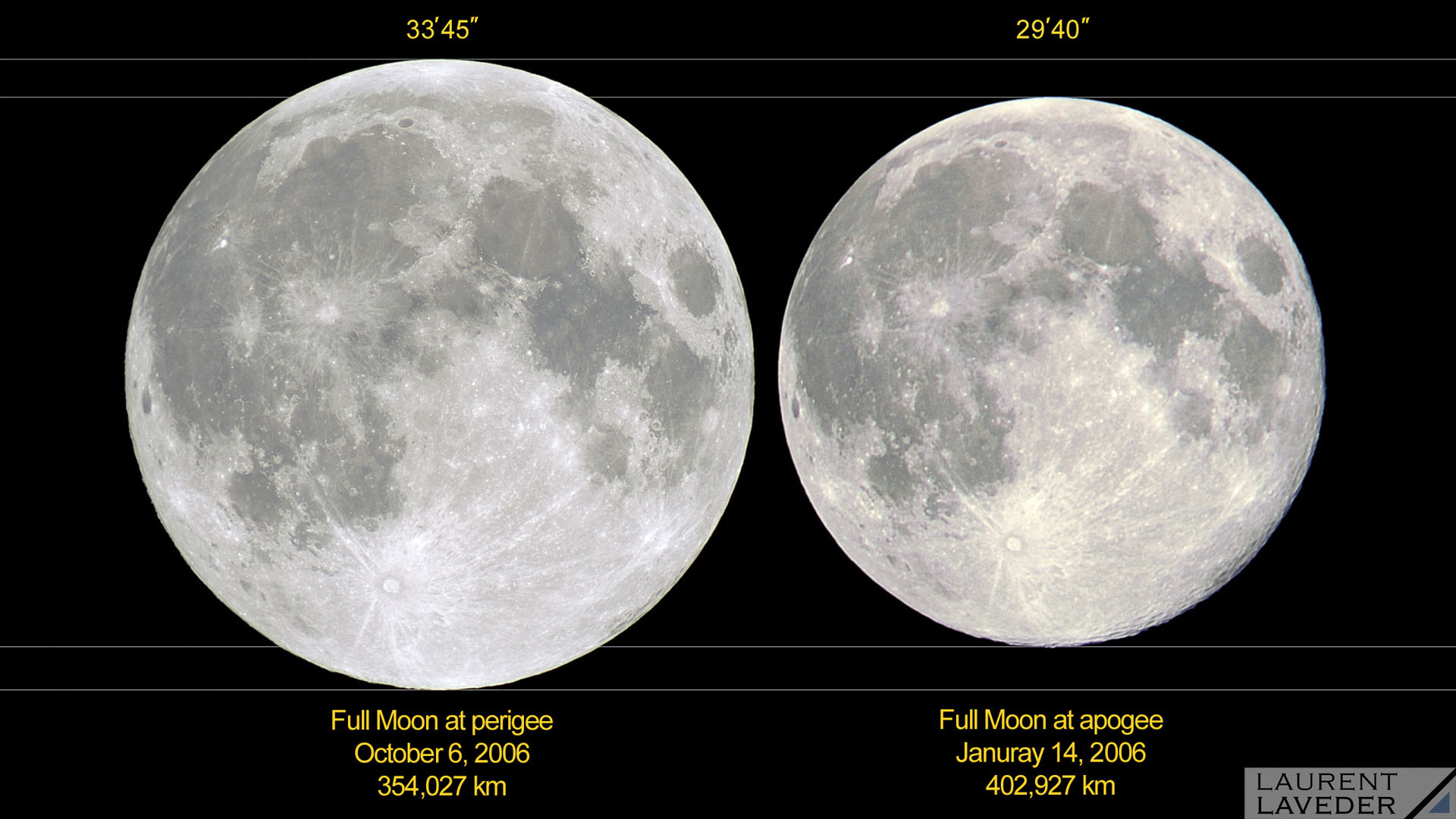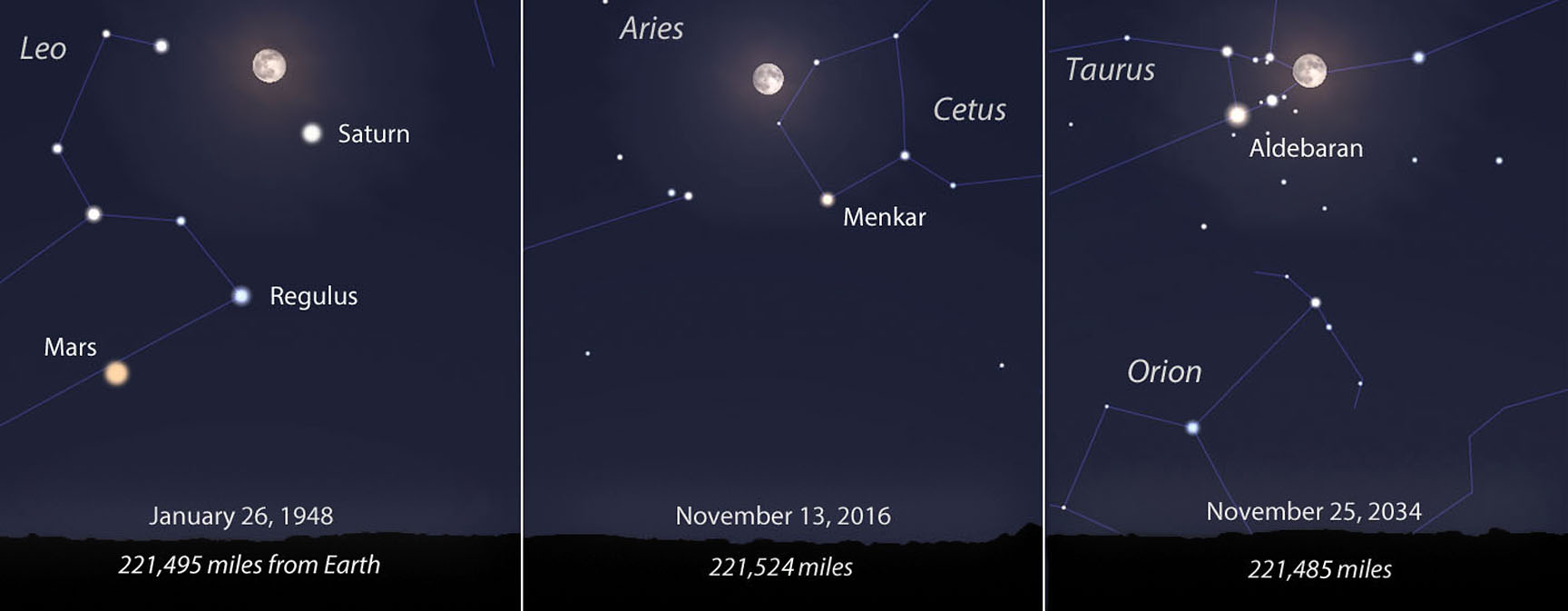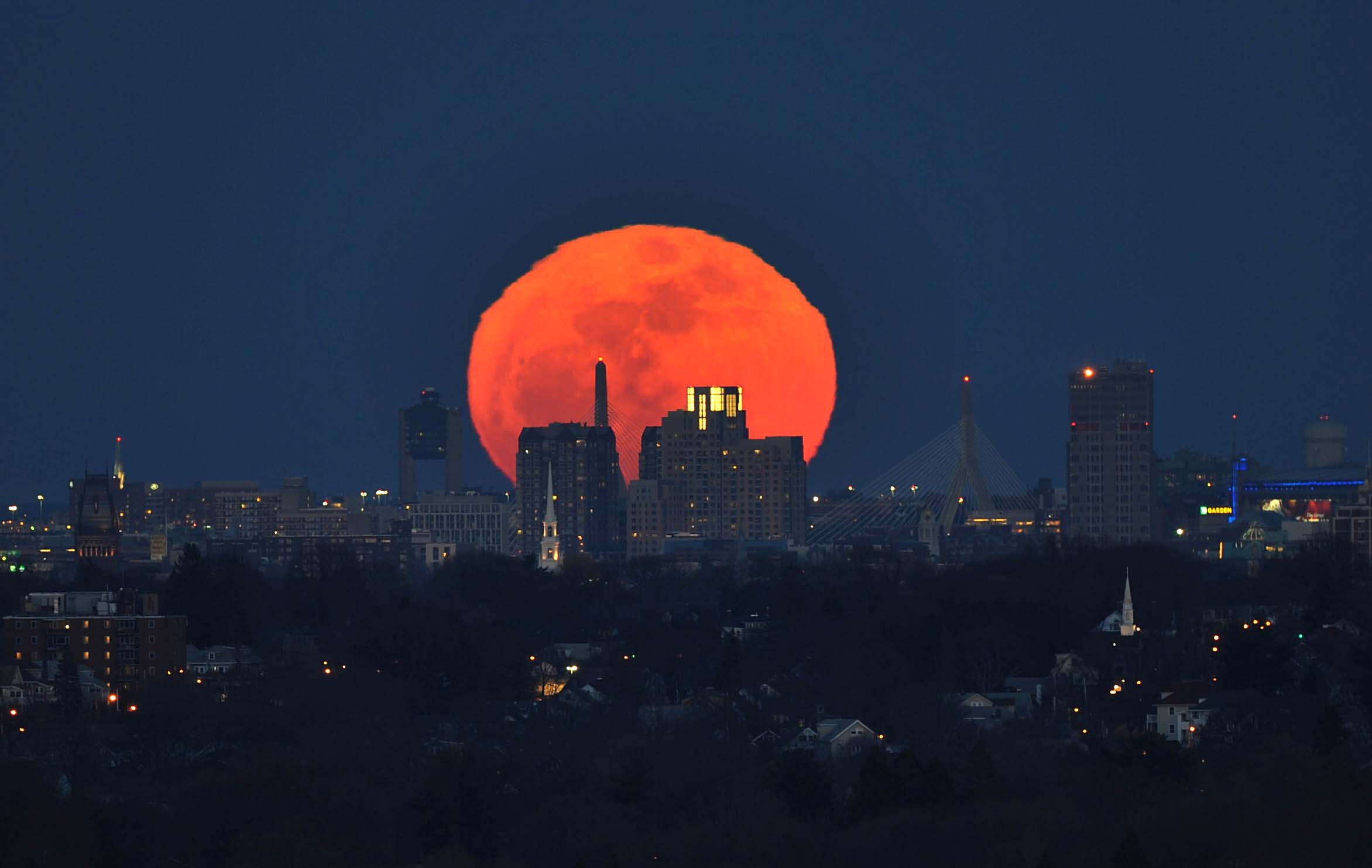A Sky & Telescope press release
Contacts:
Kelly Beatty, Senior Editor, Sky & Telescope
855-638-5388 x22168, [email protected]
Alan MacRobert, Senior Editor, Sky & Telescope
855-638-5388 x22151, [email protected]
| Note to Editors / Producers: This release is accompanied by publication-quality illustrations. |
The full Moon on Monday, November 14th, will be a little bigger and brighter than normal, because on that day the Moon will be closer to Earth than it's been in nearly 69 years.
At 6:23 a.m. Eastern Standard Time (3:23 a.m. PST, 11:23 Universal Time), the centers of the Moon and Earth will be 221,524 miles (356,509 km) apart. Surface to surface, the distance will be 216,486 miles (348,401 km).
Quite by chance, the Moon will be exactly full less than 3 hours later, at 8:52 a.m. EST (5:52 a.m. PST, 13:52 Universal Time). This timing means that, for most evening viewers in North America, the Moon will look fullest and be closest the previous evening (Sunday, November 13th). But the tiny difference between the two evenings will be undetectable.
The Moon hasn't been this close to Earth since January 26, 1948 (when the separation was 31 miles less than on November 14th), and it won't come this close again until November 25, 2034 (40 miles less).
The reason for this rare proximity is due mostly to the fact that the Moon's orbit around Earth isn't a perfect circle but instead is slightly elliptical. On average the Moon is 238,900 miles (384,400 km) away, but it's about 5% closer to Earth at perigee and 5% farther away at apogee.
The distances at perigee and apogee vary from month to month due to several factors, such as whether the lunar orbit's long axis is pointed toward the Sun. Also, the Moon's orbital extremes are greatest during November through February because that's when we're closest to the Sun — Earth's orbit is itself out of round by nearly 2% — and therefore the Sun's gravitational influence is greatest during those months.
Technically, November 14th's event is called a perigean full Moon. In recent years, however, these especially close lunar approaches have come to be called "supermoons" when they occur near the full and new lunar phases. This nickname was coined in 1979 by astrologer Richard Nolle, though he applied the term any time the new or full Moon was within 90% of perigee.
How Big Will The Moon Get?
So will the Moon look especially big and bright on November 14th? Not really. At its closest, the Moon will appear 8% larger across and 16% greater in area than average. Add to that the fact that we’re closer to the Sun than usual, and the lunar disk will appear 23% brighter than an average full Moon. “That’s not enough to notice unless you’re a very careful Moon-watcher,” notes Sky & Telescope Senior Editor Alan MacRobert.
You can make a scale model of the Earth-Moon system using a standard 12-inch globe for Earth and a baseball or an orange for the Moon. To match the average Earth-Moon separation, place them 30 feet apart. Now stand next to the Earth globe and look at your “Moon.” Then, to match the geometry of November 14th, make the separation 2 feet less. Stand next to the “Earth” again, and you’ll find that it’s hard to notice a change in the apparent size of the “Moon."
For many people, the full Moon always looks unusually large when it's near the horizon, an effect known as the "Moon illusion." Images that show a huge full Moon rising dramatically above a city skyline don't match the reality that your eyes see because the camera is magnifying the view.
In fact, there's no side-by-side way to compare an "average" full Moon, like the one last July 19th, with November's especially big one. However, you can gauge the Moon’s apparent size at different times using the tip of your finger or a pencil eraser held at arm’s length, or by looking at it through a narrow straw. It's always about ½° across.
Slightly Higher Tides
One consequence that might be noticeable next Monday involves ocean tides. Many factors influence the tidal heights at a given location, though they are ordinarily highest (called spring tides) during full or new Moon. But they'll get a small boost — perhaps a couple of inches — on November 14th.
According to NOAA's National Ocean Service, "The largest difference occurs in certain areas of the Alaska coast where the range of the tide may be increased by around 6 inches. But considering that these areas have an average tidal range of more than 30 feet, the increase is but a small percentage of the whole (less than a 2% increase)."
Sky & Telescope is making publication-quality illustrations available to our colleagues in the news media. Permission is granted for nonexclusive use in print and broadcast media, as long as appropriate credit (as noted in the caption) is included. Web publication must include a link to SkyandTelescope.com.

Laurent Laveder

Bob King / Stellarium

Dennis di Cicco
For skywatching information and astronomy news, visit SkyandTelescope.com or pick up Sky & Telescope, the essential guide to astronomy since 1941, with subscribers in more than 100 nations. Sky & Telescope and SkyandTelescope.com are divisions of F+W, a content and ecommerce company. F+W also publishes SkyWatch (an annual guide to the night sky) as well as books, star atlases, posters, prints, globes, apps, and other fine astronomy products.
 1
1